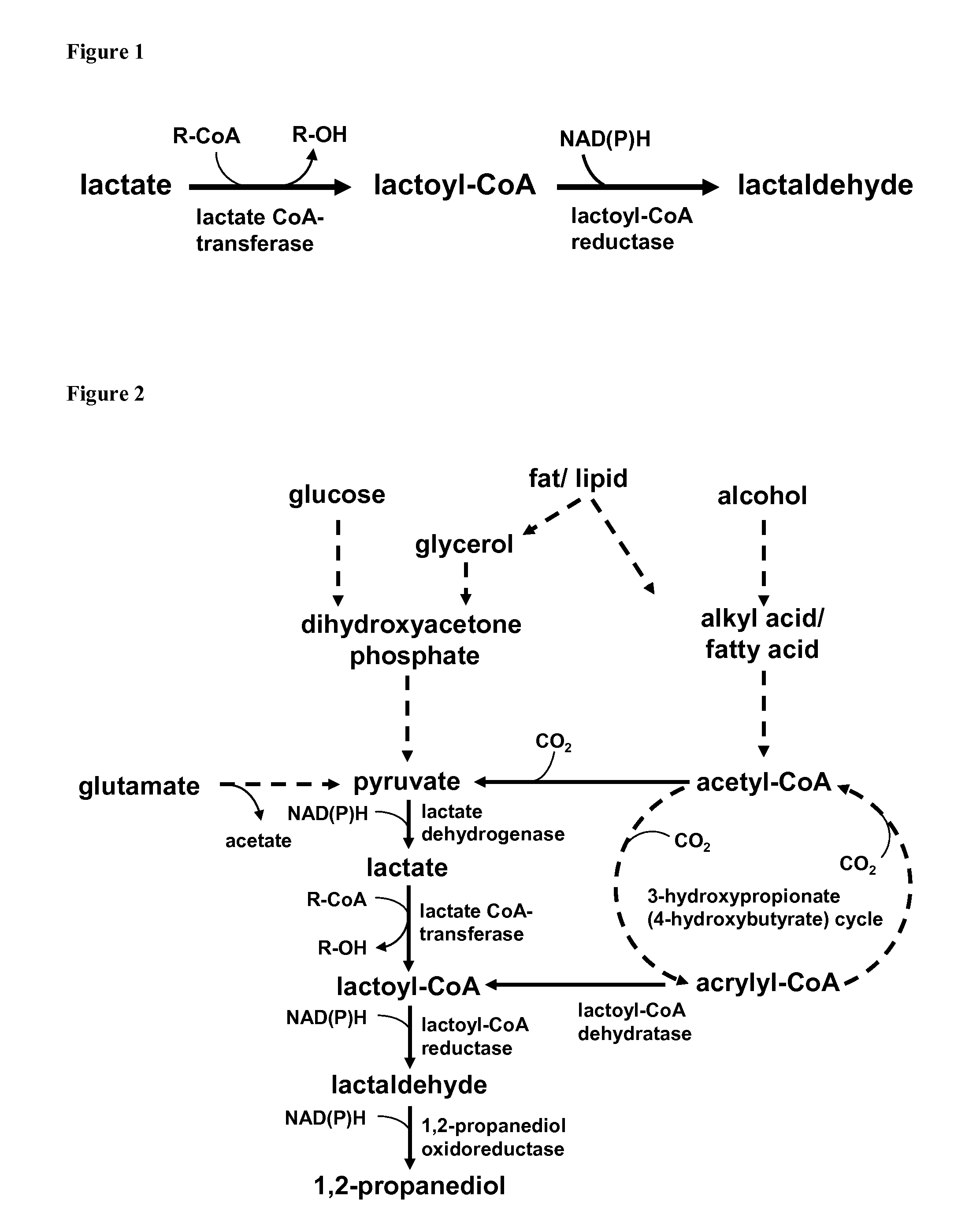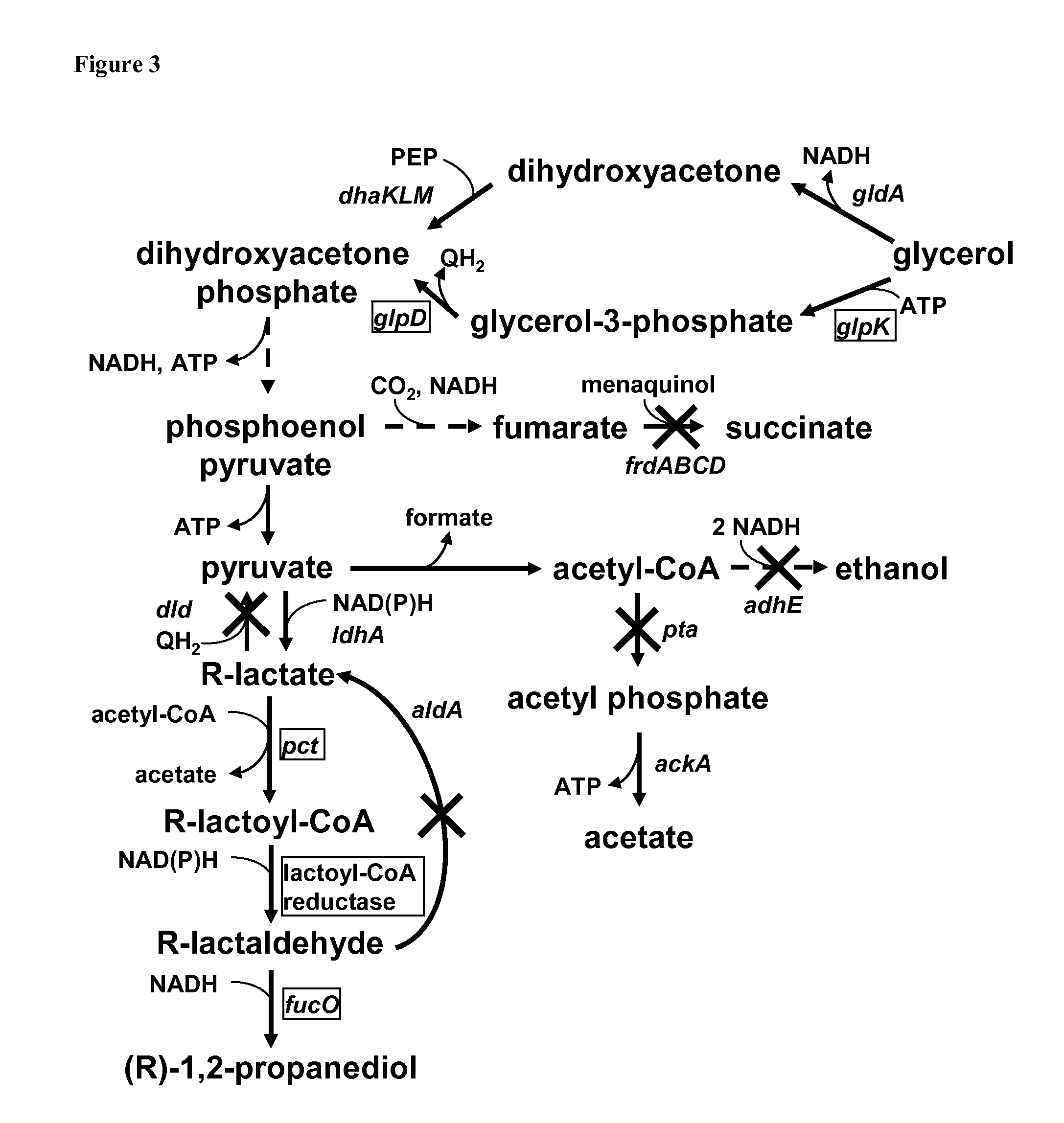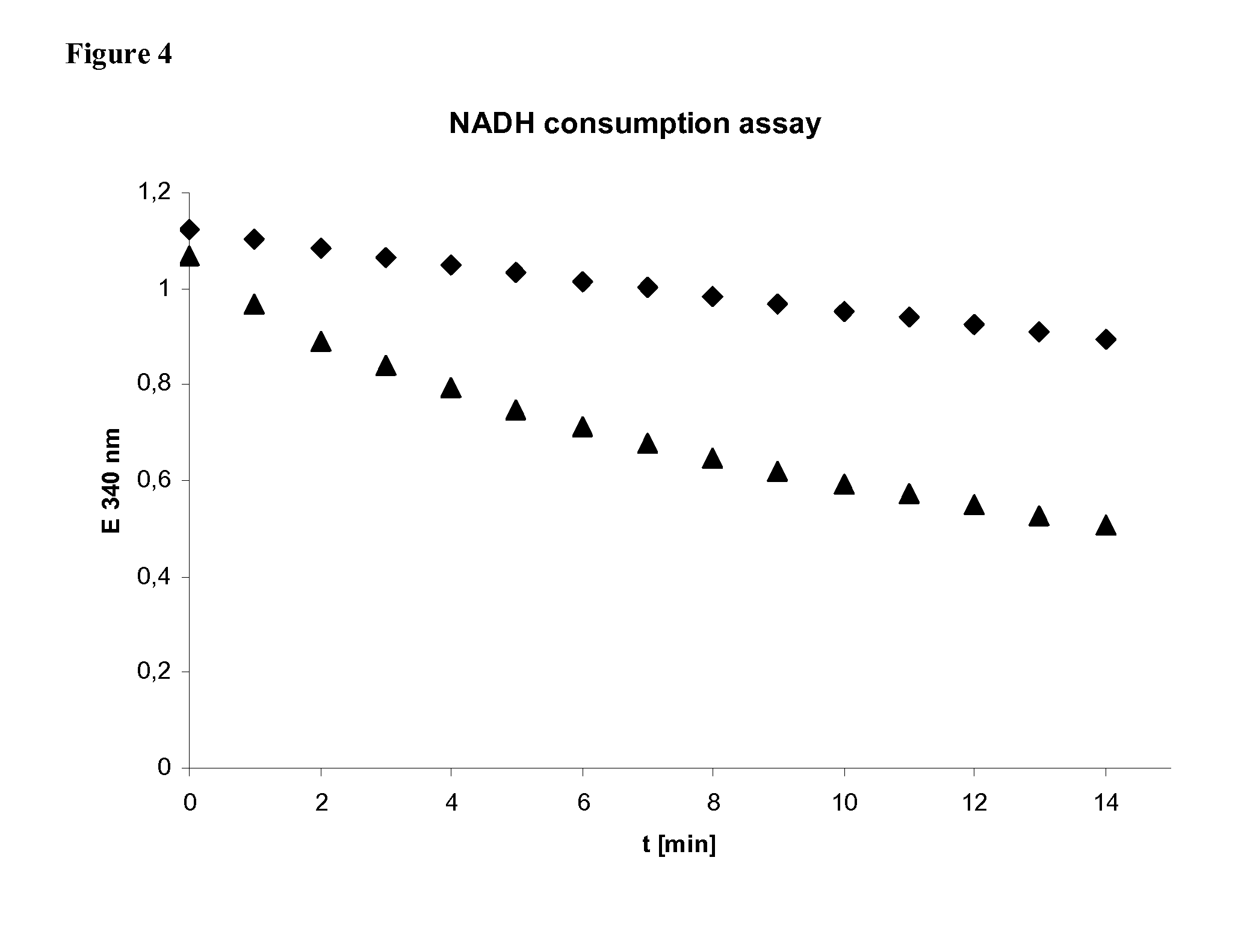New means and methods for producing propanediol
a propanediol and new technology, applied in the field of host cells, can solve the problems of difficult to achieve optimal control of cell metabolism, reduce efficiency under anaerobic and microaerobic conditions, etc., and achieve the effects of enhancing productivity potential, reducing equivalents, and enhancing productivity potential
- Summary
- Abstract
- Description
- Claims
- Application Information
AI Technical Summary
Benefits of technology
Problems solved by technology
Method used
Image
Examples
example 1
Experimental Proof for a Lactoyl-CoA Reductase
[0082]Three enzymatic reactions define key aspects of the present invention, lactoyl-CoA transferase, lactoyl-CoA reductase and lactaldehyde reductase. Two of these reactions and appropriate enzymes are well known and have been shown to function well for the purpose intended in this invention: lactoyl-CoA transferase / propionyl-CoA transferase encoded by the Clostridium propionicum gene pct has been shown to transfer coenzyme A to lactate and to use various donors, such as propionyl-CoA or acetyl-CoA (Schweiger, Buckel, FEBS Lett. 171 (1984), 79-84). The lactaldehyde reductase / 1,2-propanediol oxidoreductase encoded by the E. coli gene fucO has been shown to reduce lactaldehyde to 1,2-propanediol (Boronat, Aguilar, J Bacteriol. 140 (1979), 320-326). The key reaction of this invention, a reduction of lactoyl-CoA, has never been described or observed. Here we demonstrate such activity, monitored by NADH cofactor consumption by a cell extract...
example 2
Optimization
[0085]One or more of the following modifications may be made for a yet further efficient production as compared to the embodiments disclosed above of PD from glycerol in E. coli utilizing the lactate to lactaldehyde reduction according to the present invention; see also FIG. 3.
[0086]Deletion of fumarate reductase (ΔfrdA), phosphate acetyltransferase (Δpta), and alcohol / acetaldehyde dehydrogenase (ΔadhE) to reduce fermentation routes competing for NADH; deletion of aerobic D-lactate dehydrogenase (Δdld) to prevent degradation of lactate to pyruvate and deletion of lactaldehyde dehydrogenase (ΔaldA) to prevent degradation of lactaldehyde back to lactate; overexpression of homologous glpK and glpD for increased convertion of glycerol to the intermediate dihydroxyacetone phosphate under micro-aerob conditions; overexpression of lactate CoA-transferase (such as pct gene from C. propionicum DSM1682), a lactoyl-CoA reductase according to the present invention and a homologous 1...
PUM
| Property | Measurement | Unit |
|---|---|---|
| Fraction | aaaaa | aaaaa |
Abstract
Description
Claims
Application Information
 Login to View More
Login to View More - R&D
- Intellectual Property
- Life Sciences
- Materials
- Tech Scout
- Unparalleled Data Quality
- Higher Quality Content
- 60% Fewer Hallucinations
Browse by: Latest US Patents, China's latest patents, Technical Efficacy Thesaurus, Application Domain, Technology Topic, Popular Technical Reports.
© 2025 PatSnap. All rights reserved.Legal|Privacy policy|Modern Slavery Act Transparency Statement|Sitemap|About US| Contact US: help@patsnap.com



